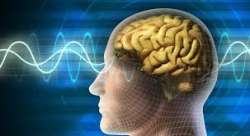Researchers map brain development in primates
New York: Researchers have now discovered a comprehensive molecular atlas of brain development in non-human primate which is responsible for shedding crucial light on what makes human brain development distinct. This analysis uncovered features of

New York: Researchers have now discovered a comprehensive molecular atlas of brain development in non-human primate which is responsible for shedding crucial light on what makes human brain development distinct.
This analysis uncovered features of the genetic code underlying brain development in our close evolutionary relative, while revealing distinct features of human brain development by comparison.
"This is the most complete spatiotemporal map we have for any mammal's development, and we have it in a model system that provides directly meaningful insight into human brain development, structure, and function," said Ed Lein, investigator at Allen Institute for Brain Science, a US-based non-profit medical research organisation.
"This exceptional dataset is useful for exploring precisely where and when genes are active in relation to the events of brain development and the onset of brain disorders," Lein noted in an analysis of the atlas published in the journal Nature.
The study is based on the US National Institutes of Health (NIH) Blueprint Non-Human Primate (NHP) Atlas, a publicly available resource created by the Allen Institute and colleagues at the University of California, Davis and the California National Primate Research Centre.
The goal of the NHP atlas was to marry the techniques of modern transcriptomics with the rich history of anatomical developmental studies by measuring gene activity at a series of ten important stages in prenatal and postnatal brain development.
At each stage, a technique called laser microdissection was used to precisely isolate fine layers and nuclei of cortical and subcortical brain regions associated with human psychiatric disease, thereby creating a high resolution time series of the generation and maturation of these brain regions and their underlying cell types.
The authors collaborated with colleagues at the Baylor College of Medicine to use this molecular map to pinpoint when and where candidate genes for diseases like autism and schizophrenia become active.
"This tremendous resource is freely available to the research community and will guide important research into the etiology of many developmental disorders for years to come," Michelle Freund, programme officer at National Institute of Mental Health, noted.
(With Agency input)